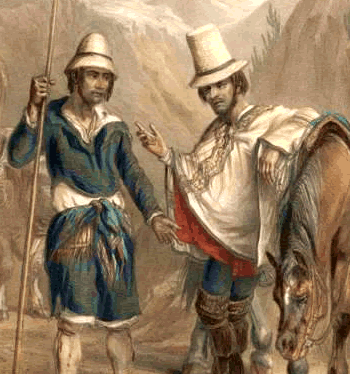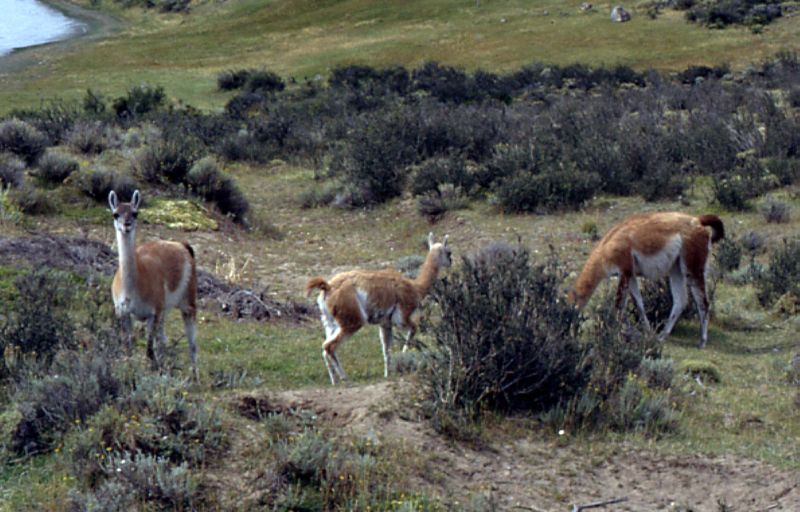|
Cancosa
Cancosa is a Chilean commune. It is a highland in Aymara town in the Tarapacá Region. Cancosa is slightly on the slopes of the Sillajhuay volcano, near the border by Bolivia. According to the Chile National Archive the town was founded by the Moscoso, Challapa, Ticuna and Mamani families. Its inhabitants live from agriculture, llama and alpaca livestock, as well as tourism and handicrafts. There are also four minefields A land mine is an explosive device concealed under or on the ground and designed to destroy or disable enemy targets, ranging from combatants to vehicles and tanks, as they pass over or near it. Such a device is typically detonated automatic ... that, in compliance with the Ottawa treaty, must be removed before 2020, by the state of Chile. Reference Populated places in Tarapacá Region Communes of Chile {{Chile-stub ... [...More Info...] [...Related Items...] OR: [Wikipedia] [Google] [Baidu] |
Sillajhuay
Sillajhuay (also known as Sillajguay or Alto Toroni) is a volcano on the border between Bolivia and Chile. It is part of a volcanic chain that stretches across the border between Bolivia and Chile and forms a mountain massif that is in part covered by ice; whether this ice should be considered a glacier is debatable but it has been retreating in recent decades. The volcano has developed on top of older ignimbrites. The volcano was active within the last one million years, but not within recent times considering the heavy glacial erosion of the mountain and the widespread periglacial modifications. Non-eruptive activity however occurs in the form of surface deformation and earthquake activity. Geography and geomorphology Sillajhuay is located in the Andes on the border between Bolivia and Chile ( commune of Pica-Colchane, Tarapaca Region) although only a small easterly sector of the mountain is located in Bolivia. The volcano lies in a thinly inhabited region; the towns of ... [...More Info...] [...Related Items...] OR: [Wikipedia] [Google] [Baidu] |
Chile
Chile, officially the Republic of Chile, is a country in the western part of South America. It is the southernmost country in the world, and the closest to Antarctica, occupying a long and narrow strip of land between the Andes to the east and the Pacific Ocean to the west. Chile covers an area of , with a population of 17.5 million as of 2017. It shares land borders with Peru to the north, Bolivia to the north-east, Argentina to the east, and the Drake Passage in the far south. Chile also controls the Pacific islands of Juan Fernández, Isla Salas y Gómez, Desventuradas, and Easter Island in Oceania. It also claims about of Antarctica under the Chilean Antarctic Territory. The country's capital and largest city is Santiago, and its national language is Spanish. Spain conquered and colonized the region in the mid-16th century, replacing Inca rule, but failing to conquer the independent Mapuche who inhabited what is now south-central Chile. In 1818, after ... [...More Info...] [...Related Items...] OR: [Wikipedia] [Google] [Baidu] |
Tarapacá Region
The Tarapacá Region ( es, Región de Tarapacá, ) is one of Chile's 16 first-order administrative divisions. It comprises two provinces, Iquique and Tamarugal. It borders the Chilean Arica and Parinacota Region to the north, Bolivia's Oruro Department and Potosí Department on the east, Chile's Antofagasta Region to the south and the Pacific Ocean to the west. The port city of Iquique is the region's capital. Much of the region was once the Tarapacá Province of Peru, which was annexed by Chile under the 1883 Treaty of Ancón at the close of the War of the Pacific. The region was important economically as a site of intense saltpeter mining, before synthetic nitrate manufacturing became possible. A number of abandoned mining towns can still be found in the region. The present day Tarapacá Region was created in 2007 by subdividing the former Tarapacá Region under Law No. 20,175, which was signed by President Michelle Bachelet in Arica. Administration The government of ... [...More Info...] [...Related Items...] OR: [Wikipedia] [Google] [Baidu] |
El Tamarugal
Tamarugal Province ( es, Provincia de Tamarugal) is one of two provinces in the northern Chilean region of Tarapacá. The capital is the city of Pozo Almonte. Name The province is named after Pampa del Tamarugal. Spanish name: * Provincia de Tamarugal: Used by the government of the province. * Provincia del Tamarugal: Used by the government of Chile. Derived from the name El Tamarugal. * Provincia El Tamarugal: Derived from the name El Tamarugal. Geography and demography According to the 2002 census by the National Statistics Institute (''INE''), the province spans an area of and had a population of 22,531 inhabitants (14,175 men and 8,356 women). It is the seventh largest and ninth least populated province in the country with a population density of . Between the 1992 and 2002 censuses, the population grew by 63.5% (8,748 persons). Administration The province is administered by a presidentially appointed delegate. Luz Eliana González Millas was appointed by president Gabr ... [...More Info...] [...Related Items...] OR: [Wikipedia] [Google] [Baidu] |
Chileans
Chileans ( es, Chilenos) are people identified with the country of Chile, whose connection may be residential, legal, historical, ethnic, or cultural. For most Chileans, several or all of these connections exist and are collectively the source of their Chilean identity. Chile is a multilingual and multicultural society, but an overwhelming majority of Chileans have Spanish as their first language and either are Christians or have a Christian cultural background. Therefore, many Chileans do not equate their nationality with ethnicity, but with citizenship and allegiance to Chile. The overwhelming majority of Chileans are the product of varying degrees of admixture between European ethnic groups (predominantly Spaniards and Basques) with peoples indigenous to Chile's modern territory (predominantly Mapuche). Although the historic mestizaje of Europeans and Amerindians is evident across all social strata in the Chilean population, there is a strong correlation between the ratio ... [...More Info...] [...Related Items...] OR: [Wikipedia] [Google] [Baidu] |
Agriculture
Agriculture or farming is the practice of cultivating plants and livestock. Agriculture was the key development in the rise of sedentary human civilization, whereby farming of domesticated species created food surpluses that enabled people to live in cities. The history of agriculture began thousands of years ago. After gathering wild grains beginning at least 105,000 years ago, nascent farmers began to plant them around 11,500 years ago. Sheep, goats, pigs and cattle were domesticated over 10,000 years ago. Plants were independently cultivated in at least 11 regions of the world. Industrial agriculture based on large-scale monoculture in the twentieth century came to dominate agricultural output, though about 2 billion people still depended on subsistence agriculture. The major agricultural products can be broadly grouped into foods, fibers, fuels, and raw materials (such as rubber). Food classes include cereals ( grains), vegetables, fruits, cooking oils, m ... [...More Info...] [...Related Items...] OR: [Wikipedia] [Google] [Baidu] |
Llama
The llama (; ) (''Lama glama'') is a domesticated South American camelid, widely used as a meat and pack animal by Andean cultures since the Pre-Columbian era. Llamas are social animals and live with others as a herd. Their wool is soft and contains only a small amount of lanolin. Llamas can learn simple tasks after a few repetitions. When using a pack, they can carry about 25 to 30% of their body weight for 8 to 13 km (5–8 miles). The name ''llama'' (in the past also spelled "lama" or "glama") was adopted by European settlers from native Peruvians. The ancestors of llamas are thought to have originated from the Great Plains of North America about 40 million years ago, and subsequently migrated to South America about three million years ago during the Great American Interchange. By the end of the last ice age (10,000–12,000 years ago), camelids were extinct in North America. As of 2007, there were over seven million llamas and alpacas in South America an ... [...More Info...] [...Related Items...] OR: [Wikipedia] [Google] [Baidu] |
Alpaca
The alpaca (''Lama pacos'') is a species of South American camelid mammal. It is similar to, and often confused with, the llama. However, alpacas are often noticeably smaller than llamas. The two animals are closely related and can successfully crossbreed. Both species are believed to have been domesticated from their wild relatives, the vicuña and guanaco. There are two breeds of alpaca: the Suri alpaca and the Huacaya alpaca. Alpacas are kept in herds that graze on the level heights of the Andes of Southern Peru, Western Bolivia, Ecuador, and Northern Chile at an altitude of above sea level. Alpacas are considerably smaller than llamas, and unlike llamas, they were not bred to be working animals, but were bred specifically for their fiber. Alpaca fiber is used for making knitted and woven items, similar to sheep's wool. These items include blankets, sweaters, hats, gloves, scarves, a wide variety of textiles, and ponchos, in South America, as well as sweaters, soc ... [...More Info...] [...Related Items...] OR: [Wikipedia] [Google] [Baidu] |
Land Mine
A land mine is an explosive device concealed under or on the ground and designed to destroy or disable enemy targets, ranging from combatants to vehicles and tanks, as they pass over or near it. Such a device is typically detonated automatically by way of pressure when a target steps on it or drives over it, although other detonation mechanisms are also sometimes used. A land mine may cause damage by direct blast effect, by fragments that are thrown by the blast, or by both. Landmines are typically laid throughout an area, creating a ''minefield'' which is dangerous to cross. The use of land mines is controversial because of their potential as indiscriminate weapons. They can remain dangerous many years after a conflict has ended, harming civilians and the economy. Seventy-eight countries are contaminated with land mines and 15,000–20,000 people are killed every year while many more are injured. Approximately 80% of land mine casualties are civilians, with children as the m ... [...More Info...] [...Related Items...] OR: [Wikipedia] [Google] [Baidu] |
Ottawa Treaty
The Convention on the Prohibition of the Use, Stockpiling, Production and Transfer of Anti-Personnel Mines and on their Destruction of 1997, known informally as the Ottawa Treaty, the Anti-Personnel Mine Ban Convention, or often simply the Mine Ban Treaty, aims at eliminating anti-personnel landmines (AP-mines) around the world. To date, there are 164 state parties to the treaty. One state (the Marshall Islands) has signed but not ratified the treaty, while 32 UN states, including China, Russia, and the United States have not; making a total of 33 United Nations states not party. Chronology Early action and draft Conventions 1994 self-imposed moratorium on sales of mines dated 15th March 1994 1995 legislation passed on the 3rd of March 1995 to ban the production and export of all landmines this decision was to be reviewed after 5 years Threats to the comprehensive nature of the Convention A m ... [...More Info...] [...Related Items...] OR: [Wikipedia] [Google] [Baidu] |
Populated Places In Tarapacá Region
Population typically refers to the number of people in a single area, whether it be a city or town, region, country, continent, or the world In its most general sense, the term "world" refers to the totality of entities, to the whole of reality or to everything that is. The nature of the world has been conceptualized differently in different fields. Some conceptions see the worl .... Governments typically quantify the size of the resident population within their jurisdiction using a census, a process of collecting, analysing, compiling, and publishing data regarding a population. Perspectives of various disciplines Social sciences In sociology and population geography, population refers to a group of human beings with some predefined criterion in common, such as location, Race (human categorization), race, ethnicity, nationality, or religion. Demography is a social science which entails the statistical study of populations. Ecology In ecology, a population is ... [...More Info...] [...Related Items...] OR: [Wikipedia] [Google] [Baidu] |





